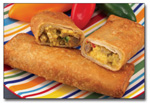New Research Predicts Breakfast Spending Will Rebound
 NEW YORK -- The most important meal of the day continues to face short-term challenges related to the recession. But a new research report from Packaged Facts, "Breakfast Trends in the U.S. Foodservice Market," predicts that consumer spending on breakfast at restaurants will rebound from an anticipated downturn in 2010 and approach $38 billion in 2011, as current value menu pricing strategies influence future spending habits.
NEW YORK -- The most important meal of the day continues to face short-term challenges related to the recession. But a new research report from Packaged Facts, "Breakfast Trends in the U.S. Foodservice Market," predicts that consumer spending on breakfast at restaurants will rebound from an anticipated downturn in 2010 and approach $38 billion in 2011, as current value menu pricing strategies influence future spending habits.
"Fast food and ">QSR (quick-service restaurant) operators are playing the 'price equals value' card for everything it's worth. By pushing the envelope with $1 deals, they risk enabling a pool of 'extreme affordability' customers. But the upshot for breakfast is that it remains a relatively untapped daypart, so that traffic gained today may translate into additional revenue tomorrow," said Don Montuori, publisher of Packaged Facts. "We believe that decisions by the likes of Denny's and Bob Evans to place everyday value for quality food at the forefront of their branding initiatives make a great deal of sense. Value pricing meets the reality of today's and tomorrow's lower-to-middle and middle-income consumers who frequent family restaurants. For breakfast, they are spinning full-service value menus and value in portion size."
Packaged Facts expects McDonald's foray into $1 breakfast menus to create pressure among other fast food/QSR players to match its lead -- an industrywide trend previously glimpsed with the proliferation of non-breakfast $1 value menus. Burger King, Wendy's and Subway have already made major breakfast moves, according to the research report.
The bottom line is low cost resonates with restaurant breakfast users, with 31 percent of respondents to Packaged Facts' proprietary survey claiming they have been influenced by a maximum $3 price when selecting a restaurant for breakfast, vs. 16 percent who set a $10 limit.
In addition, convenience influences consumer breakfast decisions, with convenience to work or errands, routine, and the need to get somewhere else quickly factoring in, the research showed.
Also relevant are breakfast menu features, such as getting a favorite menu item, wide variety and healthy menu items. And because more than half of U.S. adults drink coffee, restaurants have created value bundles that offer coffee with breakfast food to increase foot traffic.
Even though restaurant sales fell during the recession and initial recovery, breakfast has fared relatively well and has taken market share away from both the lunch and dinner dayparts. Packaged Facts found only 34 percent of restaurant goers had eaten breakfast at a restaurant in the past month, and an even smaller percentage of the general population said the same.
This means the industry has an opportunity to woo the more than 150 million adult consumers who do not frequent restaurants for breakfast, Packaged Facts stated.
